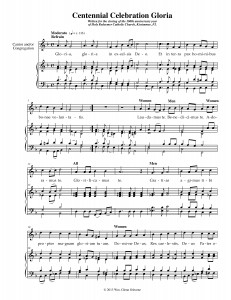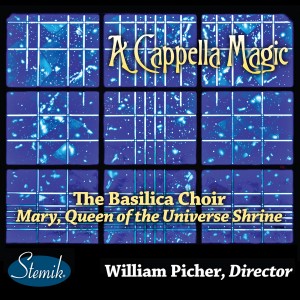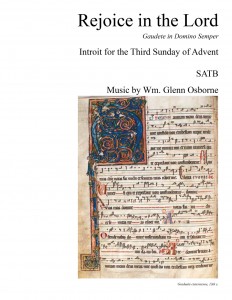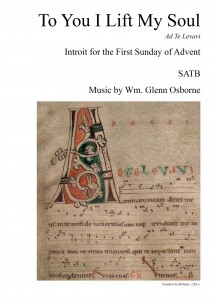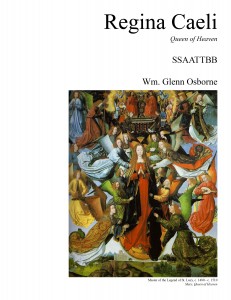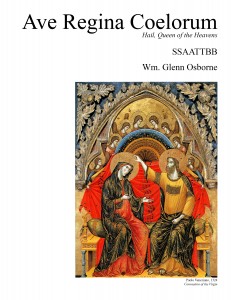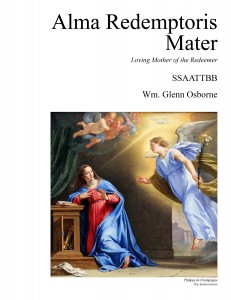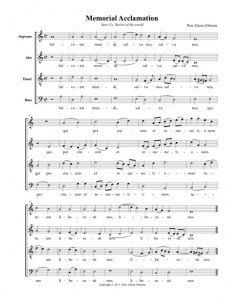 One of the difficulties in using a historical musical setting of the Latin Mass in the Novus Ordo is the lack of Memorial Acclamation and Amen. With only two syllables, it’s usually pretty easy to do some text replacement and derive an Amen from material in other movements. It may even be possible to simply use the amen found at the end of the Gloria or Credo as a stand alone Eucharistic acclamation. The Memorial Acclamation, regardless of the text option chosen, proves a much tougher challenge.
One of the difficulties in using a historical musical setting of the Latin Mass in the Novus Ordo is the lack of Memorial Acclamation and Amen. With only two syllables, it’s usually pretty easy to do some text replacement and derive an Amen from material in other movements. It may even be possible to simply use the amen found at the end of the Gloria or Credo as a stand alone Eucharistic acclamation. The Memorial Acclamation, regardless of the text option chosen, proves a much tougher challenge.
For the Choral Mass on February 22, 2013, at the Basilica of the National Shrine of Mary, Queen of the Universe, Dr. William Picher gave me the task of creating something for him to use alongside Palestrina’s Missa Papae Marcelli. While I initially wrote something for the SATTBB voicing that Palestrina uses, I forgot that this was to be a Latin Mass and set the English response “Save Us, Savior of the World.” Mea culpa. As six contrapuntal voices seemed a bit of a stretch for me in the limited time I had to prepare the piece, when I started over again with the equivalent Latin text, I opted for the more traditional (and perhaps more useful) SATB voicing.
I hope to have a recording of live singers performing the piece after February 22. In the meantime, the music notation program Finale has provided this rendering:
Listen now
Salvator mundi, salva nos, qui per crucem et resurrectionem tuam liberasti nos.
Lord, by your cross and resurrection you have set us free. You are the Savior of the world.

